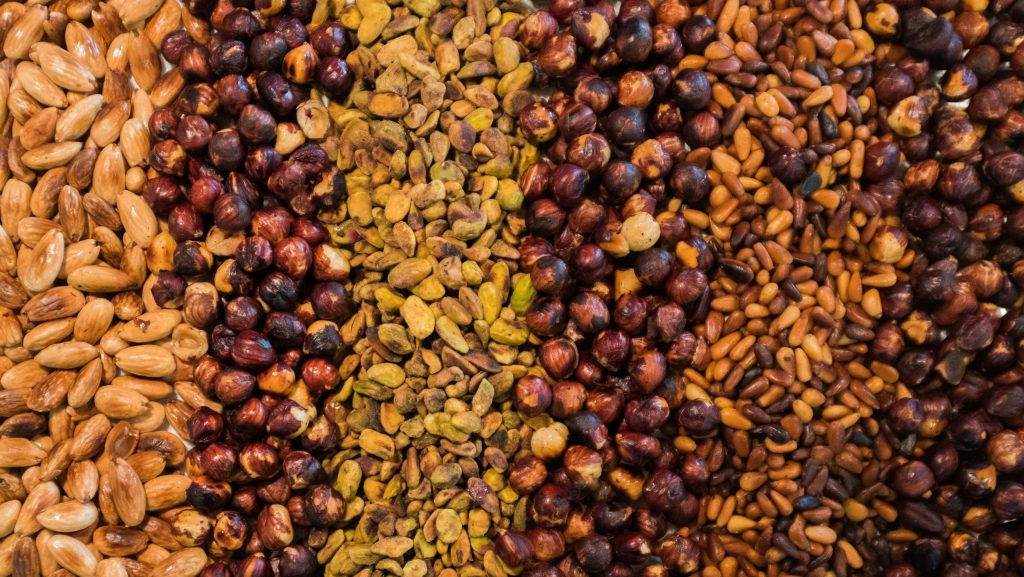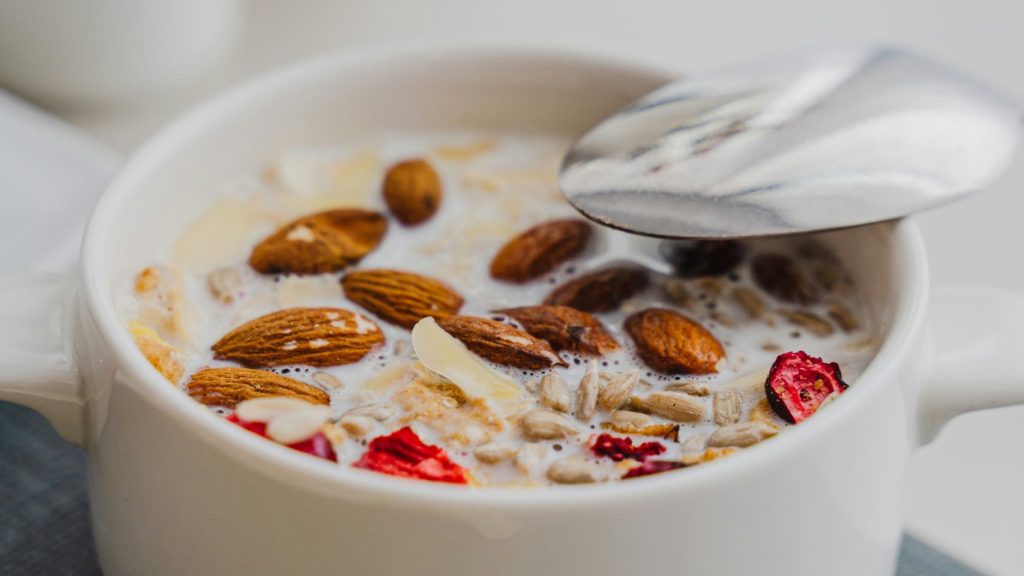Table of Contents
Starting a fitness regimen is an important step toward improving health. Central to achieving fitness goals is the understanding of protein’s role in the body. Protein, a crucial nutrient, supports muscle repair, growth, and various bodily functions. For beginners, knowing about protein quality and types is essential for nutritional planning and achieving fitness outcomes.
Protein is crucial for muscle recovery post-exercise, building lean muscle mass, and supporting metabolic health. However, proteins vary in quality. Choosing the right type of protein is a key decision for anyone looking to improve their fitness and health.
“How does the quality of protein affect your fitness goals, and why is it crucial for beginners to make informed choices about their protein intake?”
This guide focuses on “Protein for Fitness Beginners”, shedding light on “High-Quality Protein Sources”. It aims to help novices in the fitness area understand “Protein Intake for Muscle Growth”, explore “Vegetarian Protein Options for Fitness”, and evaluate “Protein Supplements vs. Natural Sources”.
Main Topics Covered:
- Understanding Protein Types and Quality: Discussing the differences between complete and incomplete proteins, their bioavailability, and amino acid profiles.
- Essential Protein Sources for Beginners: Listing animal-based and plant-based proteins suitable for fitness novices.
- Protein Needs for Fitness Enthusiasts: Guidelines on calculating protein needs based on fitness goals and the importance of protein timing.
- Vegetarian and Vegan Protein Options: Detailing plant-based protein sources for vegetarians and vegans.
- Protein Supplements: Pros and Cons: Analyzing the benefits and limitations of protein supplements compared to whole food sources.
Protein’s role in fitness goes beyond meeting daily nutritional needs; it’s about enhancing overall health and fitness performance. This article explains the importance of protein types, sources, and intake strategies, emphasizing the necessity for informed dietary choices. By understanding how to incorporate high-quality protein into their diets, readers can support their fitness goals and promote a balanced, healthy lifestyle.
This introduction sets the stage for an in-depth exploration of protein’s role in fitness, aiming to provide beginners with the knowledge needed to make informed dietary choices.
Understanding Protein Types and Quality
Protein is crucial for individuals engaging in fitness activities, serving a fundamental role in muscle repair, growth, and overall health. Adequate protein intake, particularly focusing on the quality and type of protein, is essential for nutritional planning and achieving fitness outcomes.
Complete vs. Incomplete Proteins
Proteins consist of amino acids, the building blocks essential for bodily function. Dietary proteins fall into two categories: complete and incomplete. Complete proteins contain all nine essential amino acids necessary for human health, which the body cannot produce independently. Sources of complete proteins include animal products like meat, fish, poultry, eggs, and dairy.
Incomplete proteins lack one or more of these essential amino acids and are primarily found in plant-based sources, such as grains, nuts, beans, and vegetables. It is important for those especially on plant-based diets to combine different protein sources to ensure a complete amino acid profile, vital for muscle repair and growth.
“Did you know that the bioavailability of egg protein is considered the gold standard, with a biological value of 100? This means the body can utilize nearly all the protein from eggs, making them one of the most efficient protein sources.”
Protein Bioavailability
Protein bioavailability indicates how well the body can absorb and utilize a protein. Animal-based proteins generally have higher bioavailability than plant-based proteins, meaning the body can digest and assimilate them more efficiently for muscle repair and growth. The bioavailability of protein can be influenced by several factors, including food preparation, processing, and the presence of other nutrients.
| Complete Proteins (Animal-based) | Incomplete Proteins (Plant-based) |
|---|---|
| Chicken | Beans |
| Fish | Nuts |
| Beef | Grains |
| Eggs | Vegetables |
| Dairy | Seeds |
Amino Acid Profiles
The amino acid profile of a protein details the types and quantities of amino acids it contains. Proteins with a rich profile of essential amino acids are particularly beneficial for fitness enthusiasts. These essential amino acids are vital for various bodily functions, including muscle repair, immune system support, and metabolism.

Essential Protein Sources for Beginners
Protein is a key nutrient for anyone engaged in fitness activities, critical for muscle repair, growth, and overall health. Selecting the right protein sources is crucial for beginners to support their fitness goals effectively. This section explores the primary sources of protein, both animal-based and plant-based, and offers guidance on how to achieve a balanced protein intake.
Animal-Based Proteins
Animal-based proteins are complete proteins, containing all nine essential amino acids required for optimal health. They play a crucial role in building muscle, repairing tissue, and strengthening the body, making them a vital component of a fitness enthusiast’s diet.
- Meat: Includes beef, pork, and lamb, which are excellent sources of protein, iron, and B vitamins.
- Poultry: Chicken and turkey provide high-quality protein with lower fat content than red meat.
- Fish: Especially fatty fish like salmon and mackerel, which are rich in protein and omega-3 fatty acids.
- Eggs: Known for their complete amino acid profile, making them an ideal protein source.
- Dairy: Milk, cheese, and yogurt offer protein and essential nutrients like calcium.
Plant-Based Proteins
Plant-based proteins, while often incomplete on their own, can form a complete amino acid profile when combined. They offer a sustainable alternative for those looking to diversify their protein sources or follow a vegetarian or vegan diet.
- Legumes: Beans, lentils, and chickpeas are not only rich in protein but also fiber, iron, and zinc.
- Nuts and Seeds: Sources like almonds, chia seeds, and flaxseeds provide protein, healthy fats, and fiber.
- Whole Grains: Quinoa and oats are among the few plant-based foods that are complete proteins.
- Soy Products: Tofu, tempeh, and edamame are versatile and complete in amino acid profile.
Balancing Protein Intake
Effective protein intake balance is key, involving more than just the choice between animal and plant sources. It’s about ensuring a varied diet that supports fitness goals and overall health. Beginners are advised to include protein in every meal, focusing on variety to cover the full spectrum of amino acids and other nutrients. Monitoring portion sizes and prioritizing protein quality are essential for optimizing muscle repair and growth.
“Quinoa is one of the few plant-based foods considered a complete protein, containing all nine essential amino acids, making it a powerful protein source for vegetarians and vegans alike.”
A balanced approach to protein intake, featuring both animal and plant-based sources, can accommodate personal preferences, dietary restrictions, and specific fitness objectives. By understanding the benefits of different protein sources, beginners can make informed dietary choices that enhance their fitness journey and contribute to a healthy, balanced diet.
Protein Needs for Fitness Enthusiasts
Protein intake is foundational for achieving and maintaining optimal fitness levels. It supports muscle repair, growth, and overall health, making it essential for anyone engaged in regular physical activity. This section delves into how to accurately calculate protein requirements, the significance of protein timing for recovery and muscle synthesis, and the importance of adjusting protein intake to match fitness progress.
Calculating Protein Requirements
The protein needs of an individual are influenced by weight, exercise intensity, and specific fitness objectives. General guidelines suggest an intake of 1.2 to 2.0 grams of protein per kilogram of body weight daily for those actively engaging in physical training. This range supports the necessary muscle repair and growth for muscle building and enhanced athletic performance.
Protein’s role becomes increasingly crucial during weight loss endeavors, aiding in the preservation of muscle mass while reducing calorie intake. Tailoring protein consumption to align with personal fitness goals and the nature of physical activities undertaken is critical for optimizing the benefits of a workout regimen.
“Athletes engaged in intense daily training may require up to 2.0 grams of protein per kilogram of body weight, highlighting the increased demands of high-level physical activity.”
Timing Protein Intake
Optimal muscle recovery and growth are significantly impacted by the timing of protein consumption. Ingesting protein within 30 to 45 minutes after exercising can maximize muscle protein synthesis, the key to muscle repair and growth. This post-exercise period is crucial as muscles are most receptive to nutrient uptake.
Ensuring consistent protein intake at each meal and snack throughout the day maintains a steady supply of amino acids, facilitating continuous muscle repair and growth. For those focusing on muscle building or undergoing intense training, distributing protein intake evenly across meals is paramount for achieving the best outcomes.
Table: Protein Needs by Activity Level
| Activity Level | Protein Needs (g/kg of body weight) |
|---|---|
| Sedentary | 0.8 |
| Moderate Exercise | 1.2 – 1.4 |
| Intense Exercise | 1.6 – 2.0 |
| Strength Training Athletes | 1.4 – 1.8 |
| Endurance Training Athletes | 1.2 – 1.4 |
Adjusting Intake with Progress
As fitness levels advance, protein requirements may shift. An increase in muscle mass or changes in the intensity of workouts can raise the amount of protein needed to sustain muscle growth and repair. Regular reevaluation of protein needs, in line with different stages of fitness goals, is essential to ensure that dietary intake supports bodily demands.
Changes in focus, such as transitioning from muscle building to endurance training, also necessitate adjustments in protein intake. Continuous assessment and adaptation of protein consumption strategies are vital, as each type of physical activity has unique protein demands.

Vegetarian and Vegan Protein Options
Adopting a vegetarian or vegan diet involves careful consideration of protein sources to ensure nutritional needs are met for muscle health, recovery, and overall well-being. This section provides an in-depth look at the variety of protein sources available to those following plant-based diets, including the significance of complete plant proteins, the strategy of combining incomplete proteins, and the role of supplementation.
Complete Plant Proteins
Plant-based diets can offer sufficient protein through foods that contain all nine essential amino acids, known as complete proteins. These sources are particularly valuable for vegetarians and vegans, forming the foundation of a nutritionally balanced diet.
- Quinoa: A versatile grain, complete in protein, rich in fiber, iron, and magnesium.
- Buckwheat: Gluten-free and a good source of complete protein, buckwheat can be used in various dishes.
- Hemp Seeds: These seeds offer a complete protein profile and a healthy dose of omega-3 fatty acids.
- Chia Seeds: High in protein, omega-3s, and fiber, making them a nutritious addition to any diet.
- Soy Products: Tofu and tempeh provide versatile, complete protein options that can be adapted in numerous recipes.
Combining Incomplete Proteins
Many plant-based proteins do not individually offer all essential amino acids but can be combined to create a complete amino acid profile. This method, known as protein complementation, is essential for vegetarians and vegans to ensure they receive a balanced array of amino acids necessary for health.
Rice and beans, hummus and whole grain bread, and peanut butter on whole wheat toast are classic combinations that, together, provide complete protein profiles. Understanding and applying this strategy allows for varied and nutritionally comprehensive meal planning on a plant-based diet.
“Did you know that spirulina, a type of blue-green algae, is about 60-70% protein by weight and contains all essential amino acids, making it one of the most potent plant-based protein sources available?”
Supplementation for Vegans
While whole foods are the best sources of nutrients, certain situations may require supplementation to meet nutritional needs, especially for active individuals or those with higher protein requirements.
– Vegan protein powders, such as those derived from pea, hemp, rice, or soy, can be an effective way to supplement dietary protein intake. Additionally, vitamin B12 supplements are often necessary for vegans, as this nutrient is primarily found in animal products. Choosing high-quality, minimally processed supplements can ensure that dietary supplementation effectively supports a plant-based diet.

Protein Supplements: Pros and Cons
Protein supplements have become a staple in the diets of many individuals focused on fitness and health. Understanding the types of protein supplements, their benefits, appropriate usage scenarios, and how they stack up against whole food sources is crucial for anyone considering supplementing their diet with additional protein.
“Whey protein, a by-product of cheese production, has been shown to increase muscle protein synthesis significantly more than other types of protein, making it a favorite among athletes and fitness enthusiasts.”
Types of Protein Supplements
Protein supplements vary in form and source, each offering distinct benefits for different dietary needs and preferences:
- Whey Protein: Fast-digesting, ideal for post-workout recovery.
- Casein Protein: Slow-release, suitable for sustaining amino acid levels overnight.
- Soy Protein: A complete, plant-based option for vegetarians and vegans.
- Pea Protein: Offers a high iron content and is another excellent choice for those on a plant-based diet.
When to Use Supplements
Protein supplements are particularly useful in certain contexts:
- High Protein Needs: Athletes or individuals engaging in intense physical activity may require more protein than what is feasible through whole foods alone.
- Dietary Restrictions: Vegetarians, vegans, and those with allergies can benefit from protein supplements as a convenient source of essential amino acids.
- Convenience: Supplements can provide a quick and easy protein source when whole foods are not available.
Incorporating protein supplements should be considered as part of a broader dietary strategy aimed at meeting individual health and fitness goals.
Whole Foods vs. Supplements
While protein supplements offer convenience and targeted nutrition, whole foods bring a spectrum of essential nutrients beyond protein, including vitamins, minerals, and fiber. The choice between whole foods and supplements should balance these factors:
- Nutritional Completeness: Whole foods provide a complex array of nutrients in addition to protein.
- Absorption: The body may utilize protein from whole foods more effectively due to the presence of other nutrients that aid in absorption.
- Health Benefits: Consuming a variety of whole foods supports overall health beyond muscle growth and repair.
Selecting between protein supplements and whole foods involves considering personal health goals, dietary preferences, and lifestyle factors. Both can play a role in a balanced nutritional plan, with supplements serving to fill specific gaps in protein intake.
Conclusion: Protein Quality Insights for the Fitness Beginner
Protein plays an indispensable role in supporting health and achieving fitness goals. This article has provided a thorough examination of protein’s various aspects, from its types and sources to strategies for intake, tailored for individuals at different stages of their health and fitness journey.
Key Insights:
- Identifying the distinction between complete and incomplete proteins is vital for nutritional planning.
- Balancing animal-based and plant-based proteins can enhance dietary quality and fitness results.
- Calculating personal protein needs and optimizing the timing of intake are crucial for muscle development and recovery.
- Vegetarian and vegan diets can adequately meet protein requirements with careful planning and knowledge of plant-based sources.
- Supplements offer a convenient way to meet protein needs but should be considered supplementary to a diet primarily composed of whole foods.
“Understanding protein’s role and effectively managing its intake are key steps towards achieving your wellness goals. Begin applying these insights into your daily routine for noticeable improvements in your physical health and fitness levels.”
In closing, the journey to optimal health and fitness is nuanced, requiring an understanding of how different proteins affect the body. Whether through whole foods, supplements, or a combination, ensuring adequate protein intake is crucial. Armed with the knowledge from this article, you’re better equipped to navigate the complexities of protein consumption, making choices that align with your health objectives and lifestyle preferences.